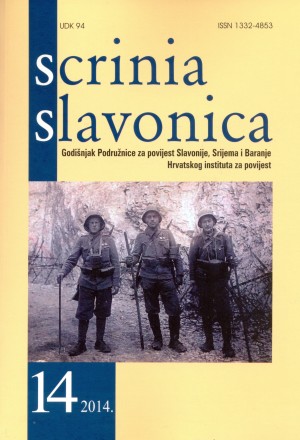Novi podaci o vakufu/legatu Benlu-age u Đakovu
New data on the waqf / endowment of Benlu-aga in Đakovo
Author(s): Fazileta HafizovićSubject(s): History
Published by: Hrvatski institut za povijest
Keywords: Ottoman Empire; Sanjak of Požega; kasaba of Đakovo; vaqf; Ottoman officials, Benlu-aga
Summary/Abstract: The document regarding the kasaba (town) of Đakovo, found by accident, as part of a mecmua (miscellany) in the Gazi Husrev-beg Library in Sarajevo, gives significant data supplementing our knowledge of and illuminating the time of the Ottoman rule in this kasaba. The document originates from a sicil, court register, and thus it is completely reliable. This document examines the condition of a facility included in the legacy of Benlu-aga, the kehaya (steward) of the prominent Lala (educator, teacher) Kara Mustafa Pasha. Benlu-aga is a name already known in the cadastral registers of the Sanjak of Požega (Pojega) from 1565 and 1579. These registers certify that Benlu-aga erected a mescit (small mosque) in Đakovo. No other data concerning the building or its legator can be found in the defters (tax registers). This is why this newly found document is very significant; it provides detailed data on the legator as well as on his waqf. According to this document it has become apparent that the waqf was bigger and composed of multiple buildings. The document gives information about the hamam – public town bath, not mentioned in cadastral registers. During that time, in the year 1580, the hamam was already in poor condition and its further fate was called into question. Since experts had estimated that for repair works a great amount of money, 100.000 akçe (Ottoman currency unit), would be needed, it was decided that repair works would not be undertaken due to the lack of financial means from the waqf. The fact that such an amount of money was required for the repair works indicates that the hamam must have been a rather solid object of high quality. Nevertheless, because of the lack of money, it was decided to sell the remains of the hamam and its plot for 30.000 akçe; the money was placed at the disposal of the waqf fund and made available for further needs of the population. According to Islamic law, such an action was considered legal due to the fact that the property was not alienated, only its purpose had been altered.
Journal: Scrinia Slavonica
- Issue Year: 2014
- Issue No: 14
- Page Range: 41-51
- Page Count: 12
- Language: Croatian

